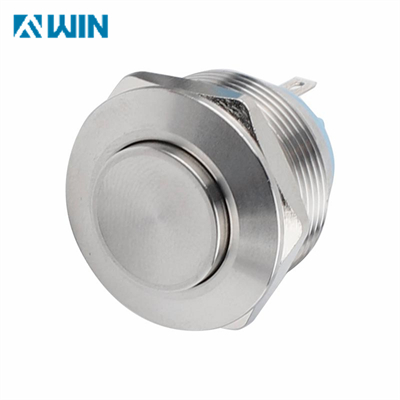Metal Push Button Switch
16MM Metal Button
16mm Metal Buttons is Widely used in clothing, luggage, footwear and other industries. In clothing, it not only plays the role of connecting clothes, but also can be used as a decorative element to improve the overall style and quality of clothing; in luggage, it is used to fix zippers or as a decorative ornament; in footwear, it can be used to fix shoelaces or as a decoration on the upper.16mm Metal Buttons (Switches)
Durable: Made of metal materials such as stainless steel and aluminum alloy, it has high strength and hardness, can withstand frequent pressing and use, and is not easy to be damaged.Good protection performance: Some buttons have functions such as waterproof, dustproof, and moisture-proof, and can work normally in harsh environments, such as buttons with protection levels of IP65, IP67, etc.
Good conductivity: The internal conductive components usually use high-quality metal materials such as copper and silver to ensure good conductivity, so that the switch action is accurate and reliable.
Normally open button: When not pressed, the circuit is in an open state; when pressed, the circuit is closed, which is often used to start equipment or trigger a certain action.
Normally closed button: Contrary to the normally open button, the circuit is closed when not pressed, and open when pressed, which can be used to stop equipment or as a safety protection device.
Self-locking button: After being pressed, the button will remain in the pressed state until it is pressed again or unlocked by other means. It is often used in circuits that need to maintain a certain state, such as power switches.
Flat-head button: The surface of the button is flat, which is convenient to operate and easy to clean, and is often used in various control panels.
Convex-head button: The surface of the button is convex, which has a good hand feel and is convenient to operate in dark or hard-to-observe environments.
Lighted button: The button is equipped with an indicator light inside, which can be used to indicate the working status of the equipment, such as power indication, operation indication, fault indication, etc. Common colors include red, green, yellow, blue, etc.
Column navigation
NEWS
CONTACT ME
CONTACT:
Skype:evelynhwang2013
phone:15999819066
E-mail:fvwin@fvwin.com
ADD:NO.168,Technology East Road,Shijie Town,Dongguan,GD,CN
